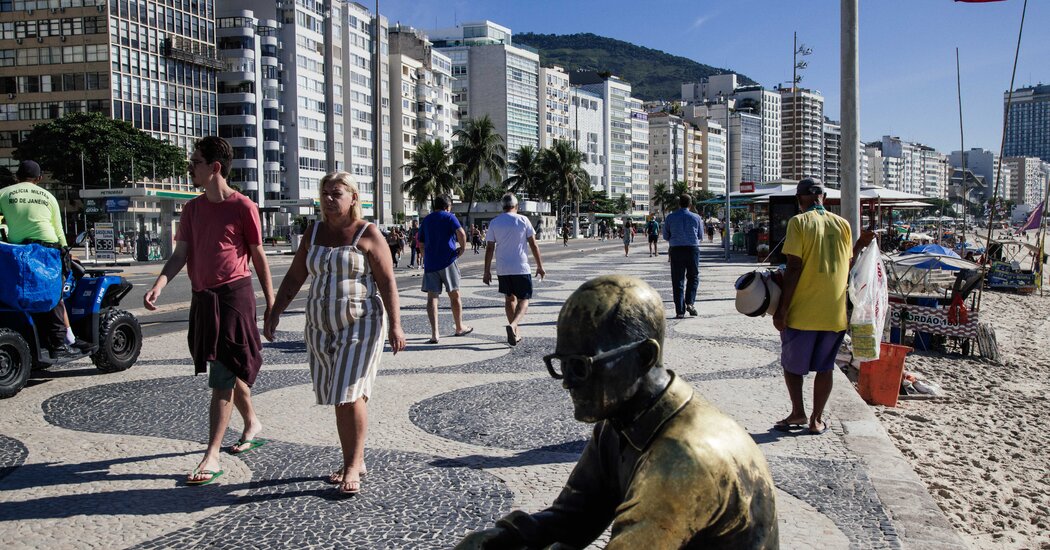For first-timers, a five-mile stroll along Copacabana and Ipanema beaches — Rio de Janeiro’s two most fabled sand parentheses — will stir up feelings even in those who have long and unironically listed “walks on the beach” as a favorite pastime.
Such reactions may range from counterfactual nostalgia (“Imagine coming of age in a place like this”) to cultural aha moments (“Bossa nova makes so much sense now”) to medium-term reverie (“What are the rules on Brazil’s digital-nomad visa again?”).
More than 20 visits in, I still turn some kind of emotional every time I return to Rio and set foot on the boardless boardwalk where the vast majority of this stroll takes place. Brazilians call such a beachfront sidewalk the “calçadão,” but forget pronouncing it and focus on its official sound: a thousand flip-flops slapping the wave-patterned Portuguese pavement.
The route is simple: Walk along the first beach, cut inland briefly to skirt a rocky peninsula, and then walk along a second beach. Stop for refreshment at the countless kiosks along the way. As the desire strikes, turn left for a dip in the water or right for an urban foray.
Start midafternoon on a sunny day — the Rio beach scene under gray skies is like Italy during a pasta shortage. Weekends are good, December to February summer weekends are better, and Sundays are ideal, as the city closes the adjacent beachfront avenue for throngs and thongs of promenading locals.
Sneakers or flip-flops will do, but please no sandals with socks: Rio de Janeiro beaches accept all body types and locals are accustomed to touristy foibles like baggy bikinis and gringo skin broiled to the color of juicy shrimp, but even they draw the line somewhere. Take sunscreen, a credit card — wireless tap to pay is nearly ubiquitous, even at street vendors — and keep your smartphone buried in your pocket. (This is one stretch of Rio where tourists can walk by day in relative safety, but still.) No need for a step counter; keep track of progress by the lifeguard posts (postos) along the way, numbered 1 to 12.
Start at the northernmost end of Leme Beach (which soon becomes Copacabana), taking the time to stroll out to “Fisherman’s Path” along the rocks to say hi to the bronze statue of Clarice Lispector, one of Brazil’s great 20th-century novelists, or to actual, potentially more responsive, fishermen. Then pass the scene around Posto 1, with young people sunbathing and playing altinha, the…
Click Here to Read the Full Original Article at NYT > Travel…
